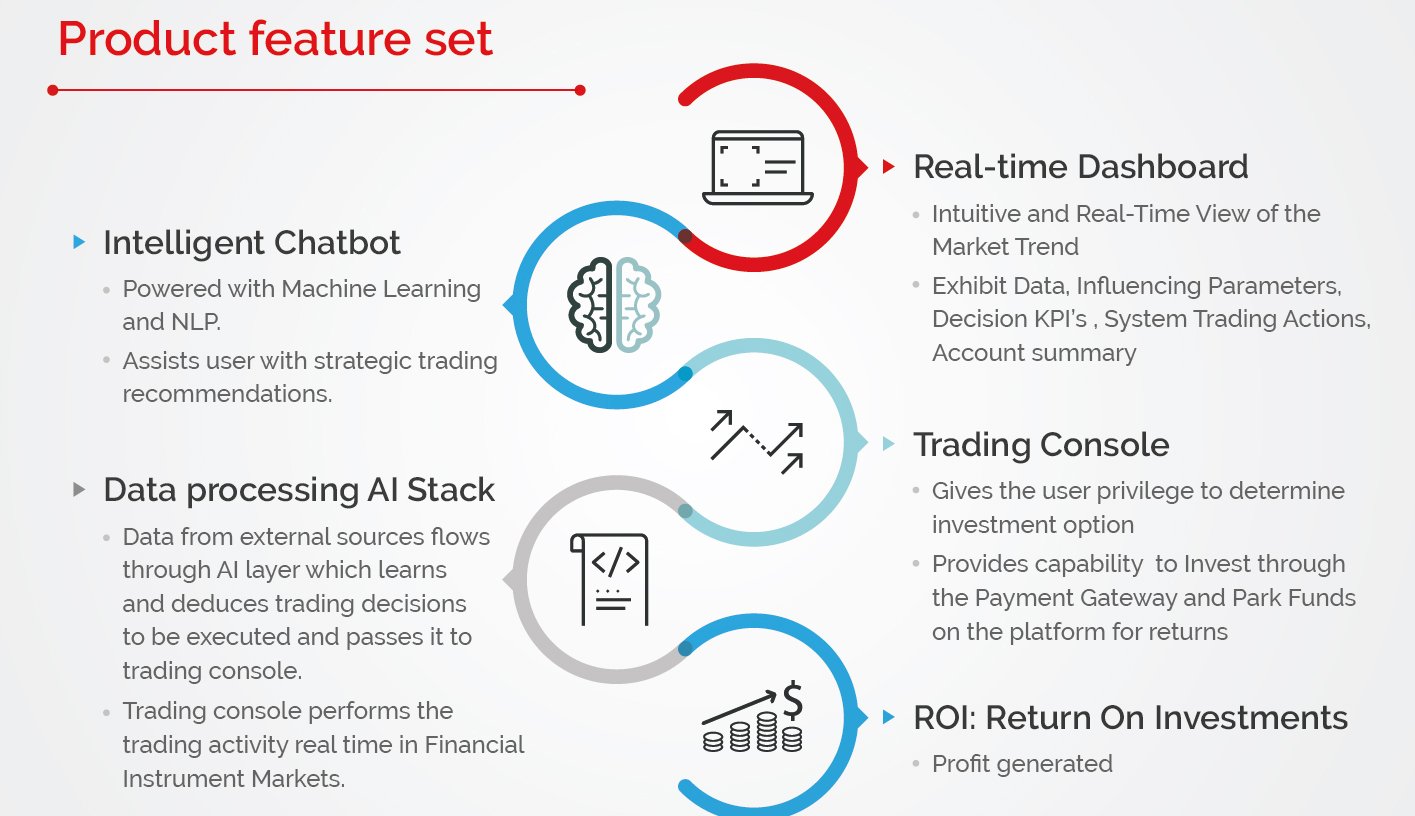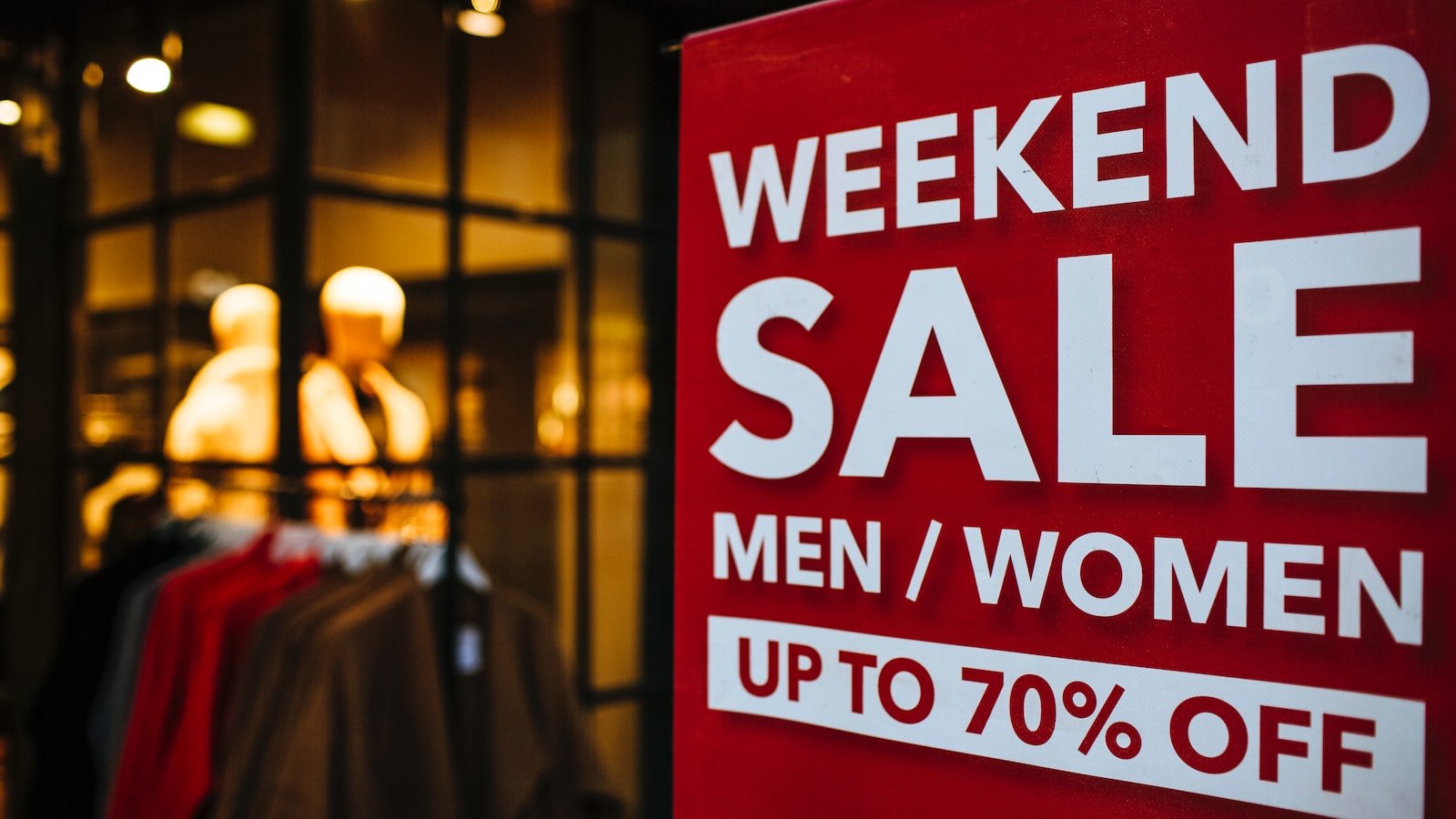Unlocking the secret to skyrocketing order values is no small feat in the world of e-commerce. But what if there was an art to it? A finely crafted dance of suggestions, leading customers down a path of delightful discoveries and tempting treats. Welcome to the intriguing realm of suggested splurges – where the dust settles on a world of calculated recommendations, meant to entice and inspire. This article unveils the hidden potential behind the art of suggested splurges, revealing how these humble nudges can transform a customer’s shopping experience and significantly boost your order values. Prepare to dive into the captivating world where clever suggestions become a powerful force in the quest for greater sales – all while leaving your customers feeling like royalty in a kingdom of irresistible product recommendations.
Table of Contents
- 1. The Psychology of Suggested Splurges: Understanding Consumer Behavior and Decision Making
- 2. Maximizing Sales through Personalized Recommendations: AI-driven Strategies for E-commerce Success
- 3. Crafting Irresistible Browsing Experiences: Effective Techniques for Cross-selling and Upselling
- 4. Fine-tuning Your Product Recommendation Engine: Key Metrics and Best Practices for Enhanced Conversions
- Q&A
- Future Outlook

Product recommendations are a powerful tool in the world of e-commerce, and they can greatly contribute to boosting your order value. By utilizing the art of suggested splurges, you can guide your customers towards making additional purchases that enhance their overall shopping experience. Here are some tips and tricks to help you harness the potential of product recommendations:
1. Understand your customers: Before suggesting splurges, it’s important to have a deep understanding of your customers’ preferences, interests, and buying behaviors. Collect data through surveys, analytics, and social media interactions to tailor your recommendations to their specific needs.
2. Cross-selling and upselling: Cross-selling involves suggesting complementary products that enhance the main item being purchased. For example, if a customer is buying a camera, you could recommend a tripod or a camera bag. Upselling, on the other hand, involves suggesting higher-end models or premium versions of products. Offering a more feature-rich option can entice customers to spend more.
3. Bundle deals: Encourage customers to splurge by offering bundle deals. Grouping related products together at a discounted price can create a sense of value and prompt customers to add more items to their cart. For example, a clothing store could offer a “Complete Outfit Bundle” with matching top, bottom, and accessories.
4. Limited-time offers: Create a sense of urgency by offering limited-time deals on recommended products. Display a countdown timer or label items as “Limited Stock Left” to urgency and encourage customers to make a spontaneous splurge.
5. Personalize recommendations: Use customer data to provide personalized recommendations based on their browsing history, purchase patterns, or demographics. By showing customers products that align with their individual preferences, they are more likely to feel compelled to splurge.
Remember, the art of suggested splurges is all about enhancing the customer’s shopping experience while increasing your order value. By utilizing these strategies and staying attuned to your customers’ needs, you can master the art of product recommendations and ultimately boost your e-commerce success.

1. The Psychology of Suggested Splurges: Understanding Consumer Behavior and Decision Making
Suggested splurges, also known as product recommendations, have become an integral part of consumer behavior and decision making. Understanding the psychology behind these recommendations can ultimately boost order value and drive conversions for businesses. By effectively leveraging this art, businesses can tap into the hidden desires and preferences of their customers, ultimately turning a routine purchase into an exciting splurge.
So, what exactly makes suggested splurges so compelling for consumers? One key factor is the power of social proof. When individuals are presented with products that others have recommended or purchased, it triggers a sense of validation and trust. This perception that others have found value in a particular item provides reassurance and confidence, ultimately leading to an increased likelihood of making a purchase. Businesses can harness this psychological phenomenon by prominently displaying glowing customer reviews and testimonials alongside their product recommendations, reinforcing the notion that these splurges are worth indulging in.
- Highlighting limited availability: Creating a sense of scarcity or exclusivity through product recommendations can make customers feel a sense of urgency to splurge. It taps into the fear of missing out (FOMO) and encourages immediate action to secure the desired item.
- Bundling complementary items: Pairing suggested splurge items with related products or accessories can entice customers to explore additional options and increase their overall order value. This technique leverages the concept of convenience and creates a seamless shopping experience.
- Personalized recommendations: Using data and analytics, businesses can tailor product recommendations to each individual customer based on their browsing and purchase history. This customization not only enhances the shopping experience but also makes customers feel seen, understood, and more likely to splurge on items that align with their personal preferences and interests.
By mastering the intricacies of the psychology behind suggested splurges, businesses can revolutionize their marketing strategies and drive higher revenue. Meticulously crafting product recommendations that instill trust, create a sense of urgency, offer complementary options, and cater to personal preferences will undoubtedly unlock the potential for increased order values and customer satisfaction.

2. Maximizing Sales through Personalized Recommendations: AI-driven Strategies for E-commerce Success
Personalized product recommendations have become an essential tool for e-commerce businesses looking to maximize their sales. By leveraging AI-driven strategies, these recommendations offer a tailored shopping experience that caters to the unique preferences and needs of each individual customer. The key to success lies in understanding how to effectively suggest splurges that not only enhance order value but also delight customers with their relevance and appeal.
One of the most powerful ways to boost order value is by implementing cross-selling recommendations. For example, imagine a customer is browsing for a new smartphone on an e-commerce website. By utilizing AI algorithms, the platform can analyze the customer’s preferences and suggest complementary products such as phone cases, wireless earphones, or screen protectors. These recommendations can be seamlessly integrated into the product page or displayed as a “Customers who bought this also bought” section. By leveraging the power of suggestive selling, businesses can effectively increase the chances of customers adding these additional items to their cart, ultimately boosting their order value.
Another effective strategy is utilizing upselling recommendations. By analyzing customers’ browsing and purchase history, AI algorithms can identify opportunities to suggest higher-priced alternatives or upgraded versions of the products they are interested in. For instance, if a customer is viewing a mid-range laptop, the platform can intelligently recommend a top-of-the-line model with enhanced features such as faster processors or larger storage capacity. These recommendations can be strategically placed on product pages or even during the checkout process, creating a persuasive nudge for customers to consider more premium options. With the right AI-driven approach, upselling can become an art that not only maximizes sales but also leaves customers feeling satisfied with their purchase decisions.
In summary, AI-driven strategies for personalized recommendations are paramount in the pursuit of e-commerce success. By implementing cross-selling and upselling techniques, businesses can effectively boost order value and enhance the overall shopping experience. The art of suggested splurges lies in understanding your customers’ needs and preferences, leveraging the power of AI algorithms, and presenting relevant and enticing recommendations at the right moments.Embrace the power of personalization and watch your sales soar to new heights!
3. Crafting Irresistible Browsing Experiences: Effective Techniques for Cross-selling and Upselling
Crafting irresistible browsing experiences is essential for businesses looking to increase their order value through effective cross-selling and upselling techniques. By strategically utilizing product recommendations, businesses can enhance their customers’ shopping experience and encourage additional purchases. Here are some key techniques to consider:
1. Dynamic Recommendations: By incorporating dynamic product recommendation widgets on your website, you can showcase personalized suggestions based on each customer’s browsing and purchase history. This creates a tailored shopping experience, increasing the likelihood of cross-selling and upselling. For example, if a customer is purchasing a smartphone, the recommendation widget can dynamically display compatible accessories such as cases, screen protectors, or wireless chargers.
2. Bundling and Product Sets: Creating bundles or product sets is an effective way to encourage customers to spend more by offering them a discounted price for purchasing multiple items together. This technique is particularly useful for complementary products or products that are frequently purchased together. For instance, an online clothing store can offer a set comprised of a trendy dress, matching shoes, and a stylish handbag at a discounted price, enticing customers to add more items to their cart.
3. Limited-Time Offers: Implementing time-limited offers and promotions can create a sense of urgency, prompting customers to make immediate buying decisions. For instance, an electronics retailer can offer exclusive discounts on additional warranty or extended service plans for a limited time after the purchase of a high-value item. This not only increases the order value but also generates customer satisfaction by providing peace of mind.
Remember, the key to successful cross-selling and upselling lies in providing relevant and valuable recommendations that enhance the customer’s overall shopping experience. By implementing these techniques, businesses can boost their order value while building lasting relationships with their customers. So, go ahead and unleash the power of product recommendations to create an artful browsing experience that results in increased revenue for your business.
4. Fine-tuning Your Product Recommendation Engine: Key Metrics and Best Practices for Enhanced Conversions
When it comes to running a successful e-commerce business, having a highly effective product recommendation engine is crucial. It can significantly impact your conversions and boost order value. In this post, we will delve into the world of fine-tuning your product recommendation engine and explore some key metrics and best practices that can take your suggested splurges to the next level.
First and foremost, it’s essential to understand the key metrics that can help you evaluate the performance of your product recommendation engine. These metrics will provide valuable insights into how well your engine is performing and where improvements can be made. Here are some of the most important metrics to consider:
- Click-through Rate (CTR): This metric measures the percentage of users who click on the recommended products. A high CTR indicates that your recommendations are engaging and appealing to users, while a low CTR may suggest the need for better targeting or more enticing recommendations.
- Conversion Rate: The conversion rate measures the percentage of users who make a purchase after clicking on a recommended product. A high conversion rate signifies that your recommendations are effective in driving sales, while a low conversion rate may indicate the need to reassess your recommendation strategies.
Now that we’ve covered the key metrics, let’s explore some best practices for fine-tuning your product recommendation engine:
- Segmentation: Segment your customer base to personalize recommendations. By analyzing user behavior, demographics, and purchase history, you can create targeted recommendations that cater to each segment’s preferences and increase the chances of conversion.
- Timing: Timing is everything. Consider when and where to display product recommendations. For instance, showing recommendations on the checkout page or through personalized email campaigns can be highly effective in capturing the user’s interest at the right moment.
- Social Proof: Leverage the power of social proof by showcasing customer reviews, ratings, and testimonials alongside recommended products. This can build trust, validate the quality of your products, and influence customers to make a purchase.
Fine-tuning your product recommendation engine requires a combination of data analysis, optimization strategies, and understanding your customers’ preferences. By implementing these key metrics and best practices, you can enhance your conversions, boost order value, and master the art of suggested splurges in your e-commerce business.
Q&A
Q: What is “” all about?
A: This article explores the concept of using product recommendations to enhance the value of customers’ purchases and increase their overall order value.
Q: How can product recommendations increase order value?
A: By suggesting complementary or higher-priced products that align with customers’ preferences and needs, businesses can entice customers to make additional purchases, thereby boosting their order value.
Q: What are some strategies that can be used to suggest splurges effectively?
A: The article highlights various strategies, such as personalized recommendations based on customer data, utilizing upselling and cross-selling techniques, and employing social proof to generate trust in the suggested splurges.
Q: Can you provide an example of how personalized recommendations can be used?
A: Certainly! By analyzing customers’ purchasing history or browsing behavior, businesses can suggest products that are tailored to their individual preferences. For instance, if a customer has bought a camera, they might be shown accessory bundles or recommended lenses to enhance their photography experience.
Q: How can the technique of upselling contribute to suggested splurges?
A: Upselling involves offering additional products or upgrades to customers, often at a higher price point, that provide added value or benefits. By effectively upselling, businesses can encourage customers to indulge in higher-priced options, thus boosting their order value.
Q: How does utilizing cross-selling techniques help in suggesting splurges?
A: Cross-selling involves suggesting related or complementary products to customers, enabling them to enhance their purchase or providing them with a more complete solution. By strategically cross-selling, businesses encourage customers to consider additional items they may not have considered before, adding value to their overall order.
Q: What role does social proof play in promoting suggested splurges?
A: Social proof, such as customer reviews or testimonials, can build trust and confidence in the suggested splurges. When customers see positive feedback from others who have purchased similar products, they are more likely to have faith in the suggested splurges and make additional purchases.
Q: Are there any potential challenges or risks associated with suggesting splurges?
A: While suggesting splurges can be highly effective, it is essential to strike the right balance. Overwhelming customers with too many recommendations or making irrelevant suggestions can lead to annoyance or confusion. Additionally, businesses must ensure that the suggested splurges genuinely align with customers’ preferences to avoid alienating them.
Q: What are the key takeaways from this article?
A: The article emphasizes the significance of product recommendations in increasing order value. By employing strategies such as personalized recommendations, upselling, cross-selling, and leveraging social proof, businesses can effectively suggest splurges and encourage customers to invest in additional or higher-priced products.
Q: Where can I find more information on this topic?
A: For further details and insights on “,” we recommend exploring related articles, case studies, or seeking guidance from industry experts in the field of e-commerce and marketing.
Future Outlook
As we reach the end of our exploration into the fascinating realm of product recommendations, we hope you have discovered the hidden art of suggested splurges. From the mesmerizing techniques employed by savvy businesses to the subconscious desires of consumers, this article has shed light on the power of suggestion in boosting order value.
By carefully curating product recommendations tailored to individual preferences and needs, businesses can mesmerize their customers with a symphony of perfectly selected items. The intricate dance between data analysis, customer profiling, and well-placed suggestions can truly elevate the shopping experience to new heights.
However, let us not forget the delicate balance between promoting and overwhelming. The art of suggested splurges lies not just in making enticing recommendations, but also in respecting the boundaries of personal choice and individuality. It is a fine line that must be gracefully treaded, where guidance and persuasion converge in a harmonious union.
As technology advances and personalization becomes increasingly sophisticated, the potential for product recommendations to shape the way we indulge in retail therapy is limitless. The future holds exciting possibilities, where algorithms may be able to anticipate our cravings and whims in ways that surpass our wildest imaginations.
In the ever-evolving landscape of e-commerce, the art of suggested splurges can become a formidable force, effortlessly propelling businesses towards new horizons of profit and customer satisfaction. So, the next time you embark on an online shopping journey and find yourself enticed by an array of suggestions, take a moment to marvel at the masterful strokes of behind-the-scenes recommendation engines.
From understanding the nuances of consumer behavior to unleashing the hidden potential within every purchase, the art of suggested splurges opens up a world of boundless opportunities for both businesses and customers alike. So, dear reader, armed with this newfound knowledge, go forth and indulge in the artistic symphony of suggested splurges, for in the realm of retail, there is always an opportunity for the truly extraordinary.

